Click here for the March 2025 Overflight Video. Click here for the XB-70 Full Playlist
The futuristic XB-70A was originally conceived in the 1950s as a high-altitude, nuclear strike bomber that could fly at Mach 3 (three times the speed of sound) -- any potential enemy would have been unable to defend against such a bomber.
By the early 1960s, however, new Surface-to-Air Missiles (SAMs) threatened the survivability of high-speed, high-altitude bombers. Less costly, nuclear-armed ICBMs (Intercontinental Ballistic Missiles) were also entering service. As a result, in 1961, the expensive B-70 bomber program was canceled before any Valkyries had been completed or flown.
Even so, the USAF bought two XB-70As to test aerodynamics, propulsion and other characteristics of large supersonic aircraft. The first XB-70A, on display here, flew in September 1964, and it achieved Mach 3 flight in October 1965. The second Valkyrie first flew in July 1965, but in June 1966, it was destroyed following an accidental mid-air collision. The third Valkyrie was not completed.
The first XB-70A airplane continued to fly and generate valuable test data in the research program until it came to the museum in 1969.
TECHNICAL NOTES:
Engines: Six General Electric YJ93s of 30,000 lbs. thrust each with afterburner
Maximum speed: 2,056 mph (Mach 3.1) at 73,000 feet
Range: 4,288 miles
Service ceiling: 77,350 feet
Length: 185 feet, 10 inches
Height: 30 feet, 9 inches
Weight: 534,700 lbs. loaded
XB-70A Valkyrie: Mach 3 Marvel
Conceived in the 1950s as an intercontinental strategic nuclear bomber, the futuristic Valkyrie instead became a unique test aircraft in the 1960s.
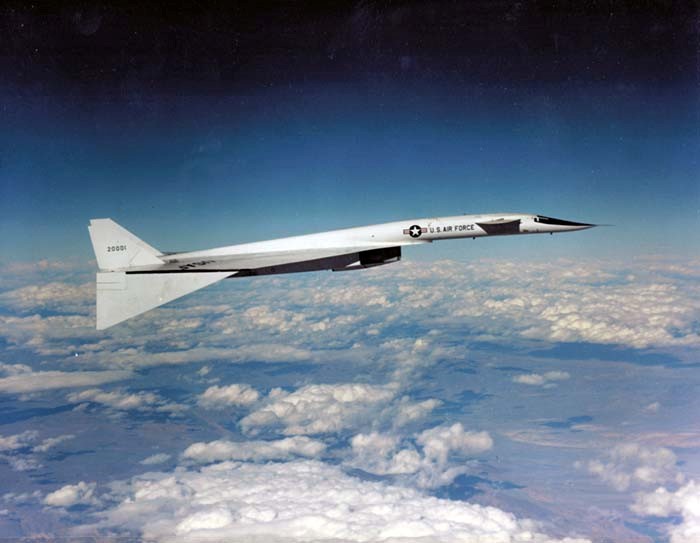
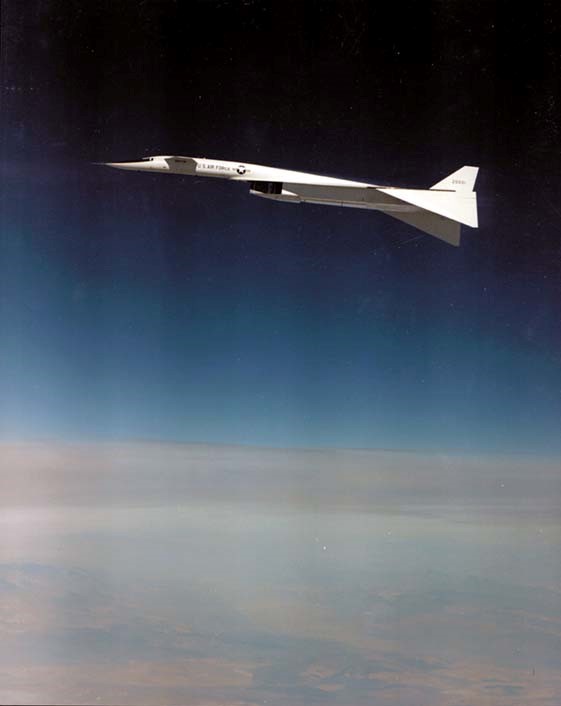
Higher and Faster: B-70 Bomber Concept
In the mid-1950s, the USAF wanted a radically advanced new bomber that could fly much faster (Mach 3+ or 2,000 mph) and higher (70,000+ feet) than the B-52 it would replace.
The revolutionary B-70 design promised to meet this demanding requirement. It would be expensive, however, and its survival could not be guaranteed against future Soviet defenses. In 1961—before a prototype was built—the B-70 bomber program was canceled.
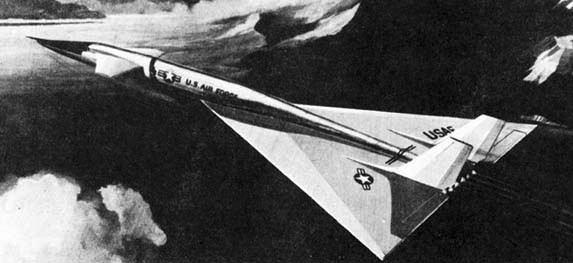
Late 1950s conceptual illustration of the B-70 bomber—note that the wingtips do not fold down.
F-108 Rapier: Mach 3 Interceptor
North American developed the Mach 3 F-108 Rapier to protect the US from future supersonic Soviet bombers. The design shared XB-70 components and materials like its ejection seat, engine, and honeycomb structure. The USAF canceled the Rapier in 1959 due to projected high costs.
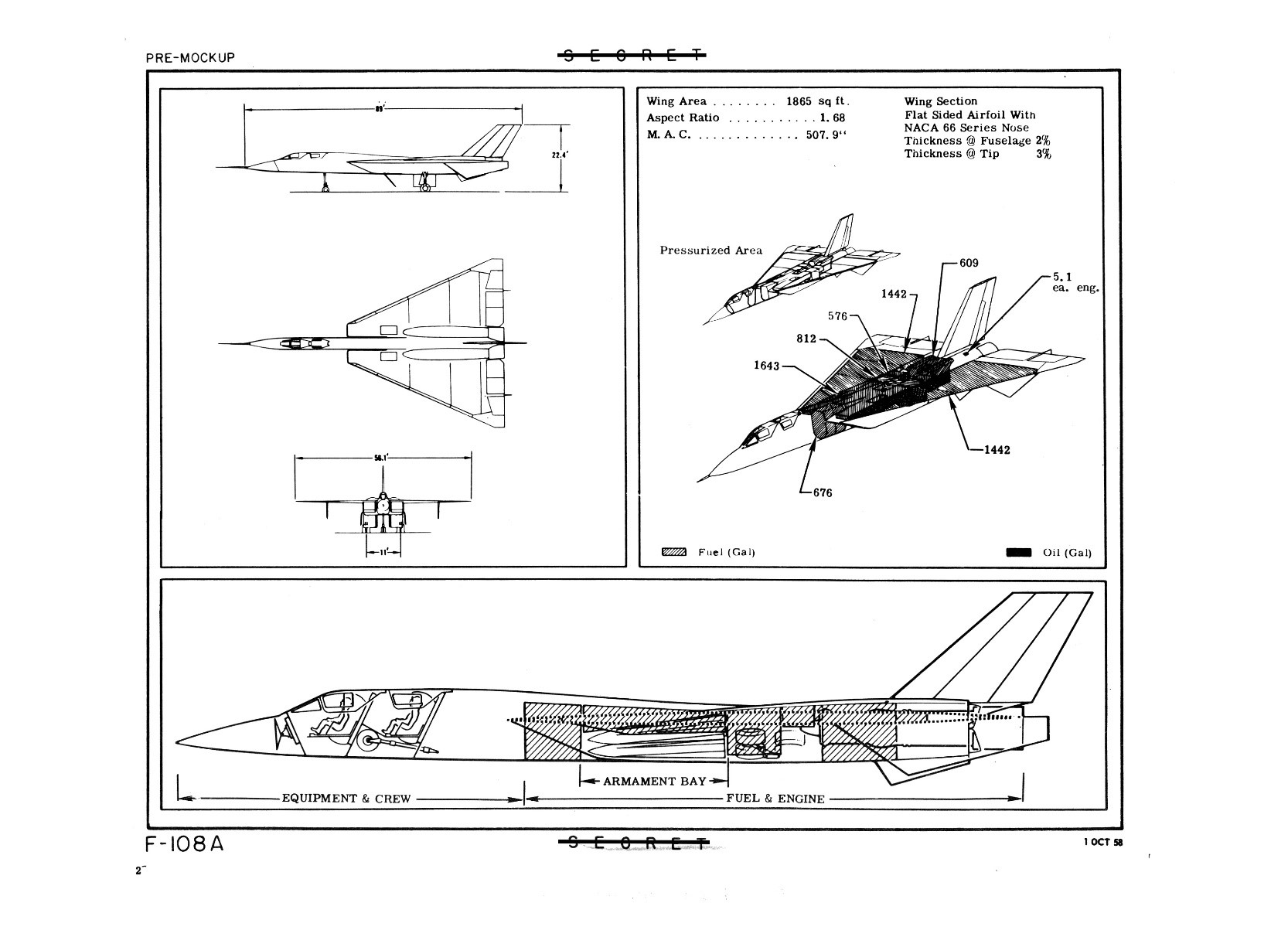
Illustrations from a 1958 Air Force document showing the F-108’s layout. The Rapier program was canceled before any prototypes were built.
XB-70A: Supersonic Test Vehicle
Although the bomber program was canceled, the USAF ordered two XB-70As (AV-1 and AV-2) as pure test aircraft. Between 1964-1969, they carried out 129 flights, generating valuable data and knowledge regarding large supersonic aircraft.
The Museum’s XB-70A (AV-1) was the first one built and also the first Valkyrie to fly at Mach 3 (about 2,000 mph). After this flight, however, it was limited to Mach 2.5 due to structural concerns.
The second XB-70A (AV-2) flew multiple times at Mach 3, including a sustained, 32-minute, Mach 3 flight in May 1966. Valkyrie AV-2 was lost in June 1966 after an F-104 collided with it in mid-air. F-104 pilot Joe Walker (NASA) and XB-70A copilot Maj Carl Cross (USAF) died. North American pilot Al White ejected from the XB-70A, but was badly injured.
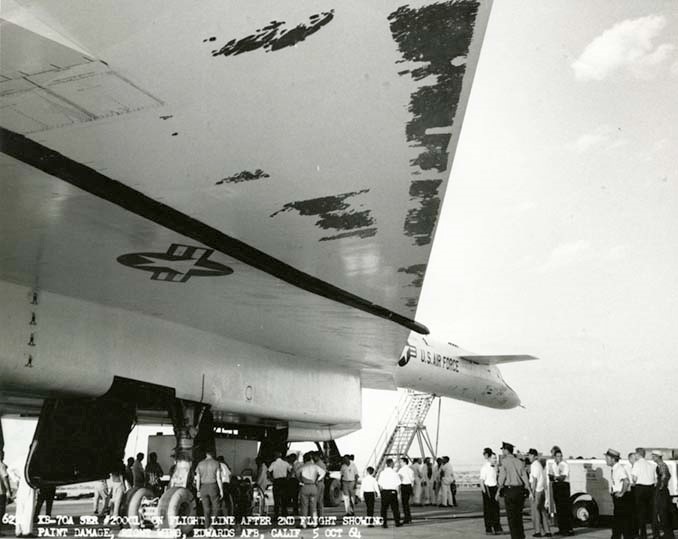
Paint flaked off XB-70 AV-1 during its early flights. North American solved the problem by repainting AV-1 with a thinner coat.
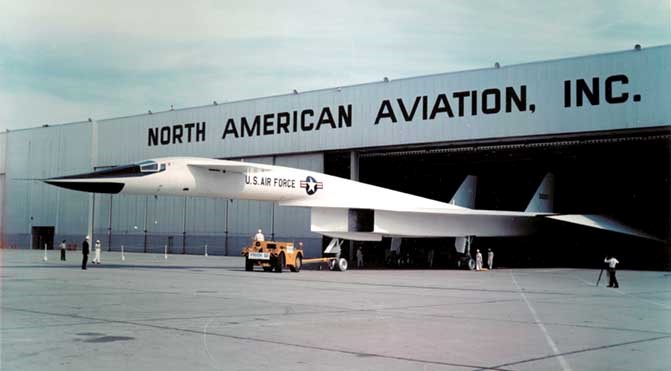
The second XB-70A (AV-2) pictured rolling out of its Palmdale, CA, factory in May 1965. The Museum’s XB-70A (AV-1) was completed in May 1964.
XB-70A Test Pilots
Only seven pilots flew the Valkyrie:
-Al White (North American Chief Test Pilot)
-Col Joe Cotton (USAF)
-Lt Col Fitzhugh “Fitz” Fulton (USAF/NASA)
-Van Shepard (North American)
-Maj Carl Cross (USAF)
-Don Mallick (NASA)
-Lt Col Emil “Ted” Sturmthal (USAF)
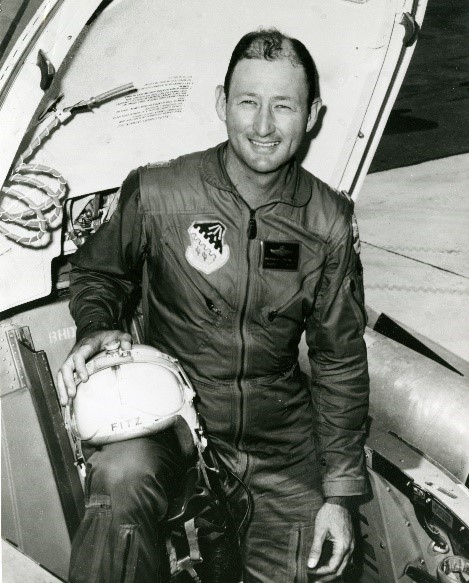 Lt Col Fitzhugh “Fitz” Fulton made 63 flights and had the most flight time (124 hours) in the XB-70A.
Lt Col Fitzhugh “Fitz” Fulton made 63 flights and had the most flight time (124 hours) in the XB-70A.
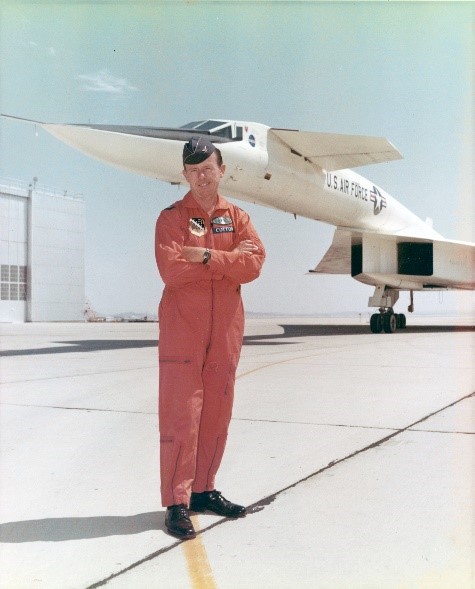 Col Joe Cotton made 62 Valkyrie flights, including copiloting AV-1 on its Mach 3 flight in October 1965.
Col Joe Cotton made 62 Valkyrie flights, including copiloting AV-1 on its Mach 3 flight in October 1965.
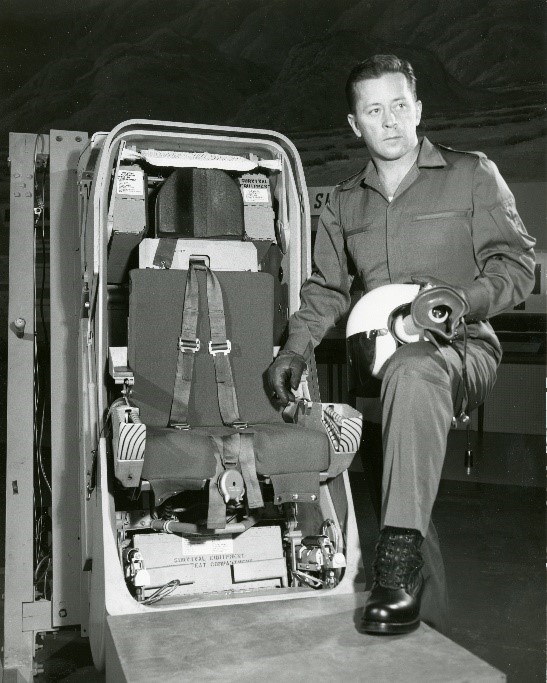 North American Chief Test Pilot Al White pictured with an XB-70A ejection seat. White made the most XB-70A flights, 67, including piloting AV-1 on its Mach 3 flight in October 1965.
North American Chief Test Pilot Al White pictured with an XB-70A ejection seat. White made the most XB-70A flights, 67, including piloting AV-1 on its Mach 3 flight in October 1965.
NASA and the Supersonic Transport (SST) Program
The US government encouraged supersonic airliner progress with the National Supersonic Transport program. NASA used XB-70A AV-1 as its primary aircraft to investigate SST operations.
In 1971, the American SST program was canceled, in part due to the problem of sonic booms on the ground—sonic booms are loud, explosive noises caused by aircraft flying faster than the speed of sound.
Later in the 1970s, however, the supersonic British/French Concorde entered commercial service and the Soviet Union briefly operated the supersonic Tu-144.
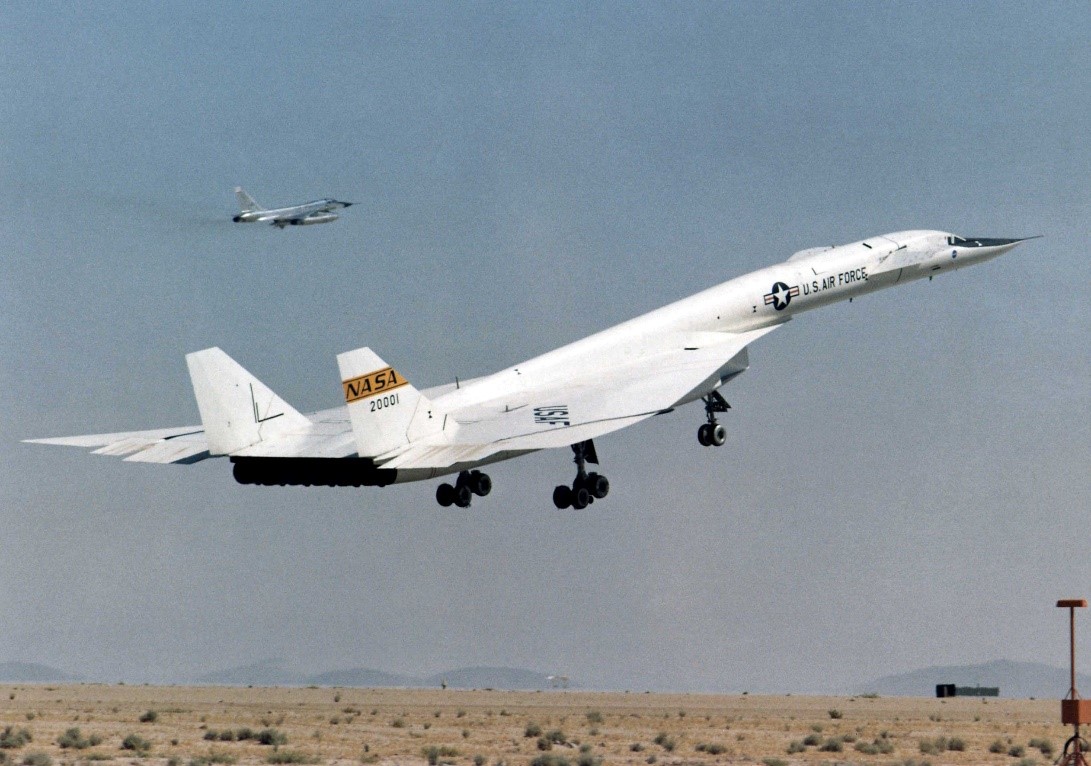 The USAF transferred XB-70A AV-1 to NASA in 1967 in support of the National Supersonic Transport Program.
The USAF transferred XB-70A AV-1 to NASA in 1967 in support of the National Supersonic Transport Program.
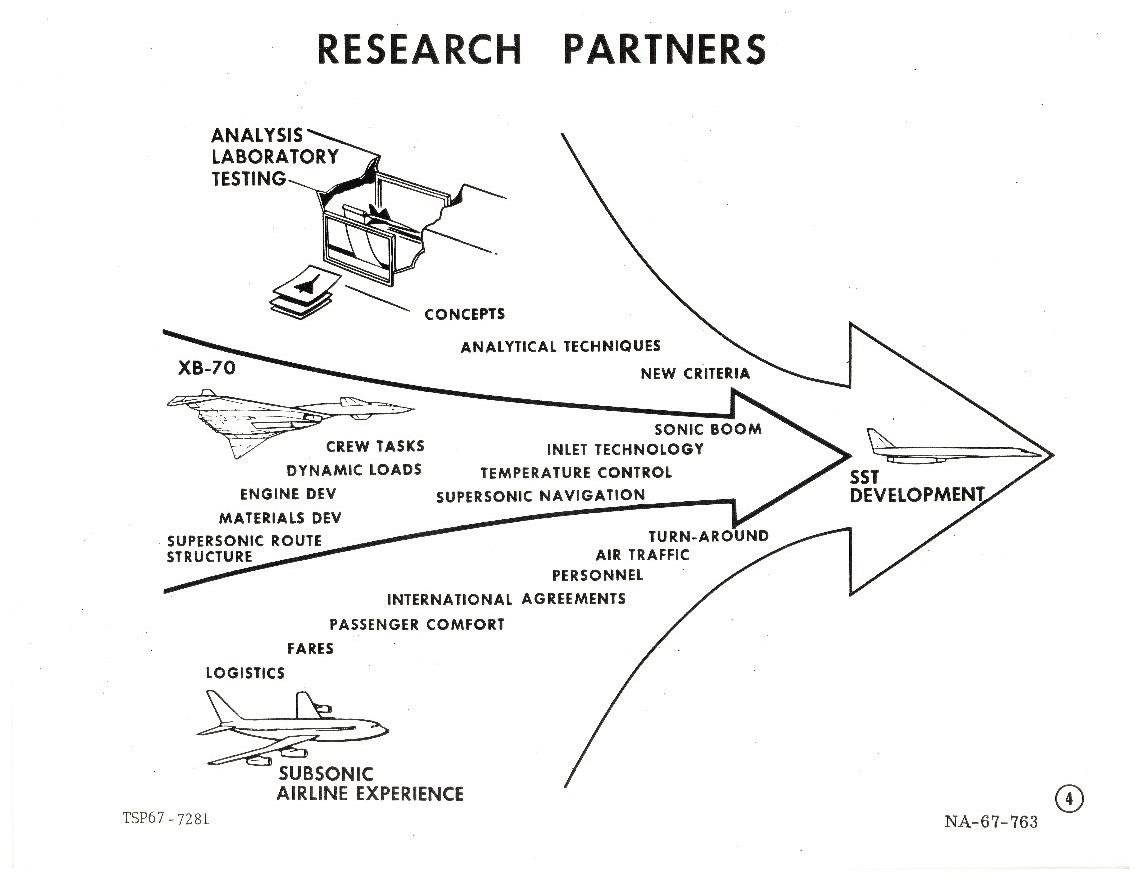
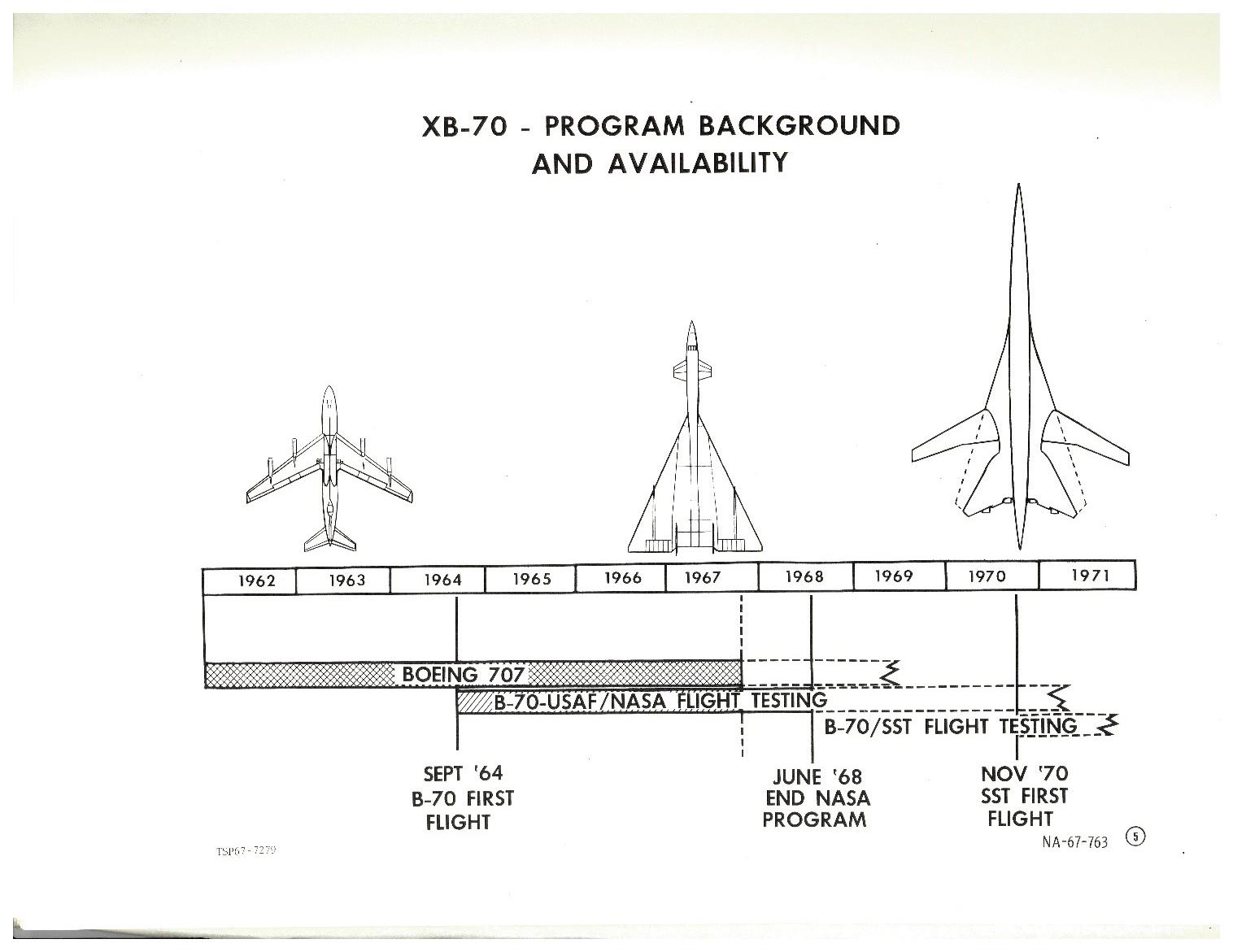
Illustrations from a 1967 report showing the significant role of the XB-70A in the SST program.
Test Vehicle to Museum Artifact
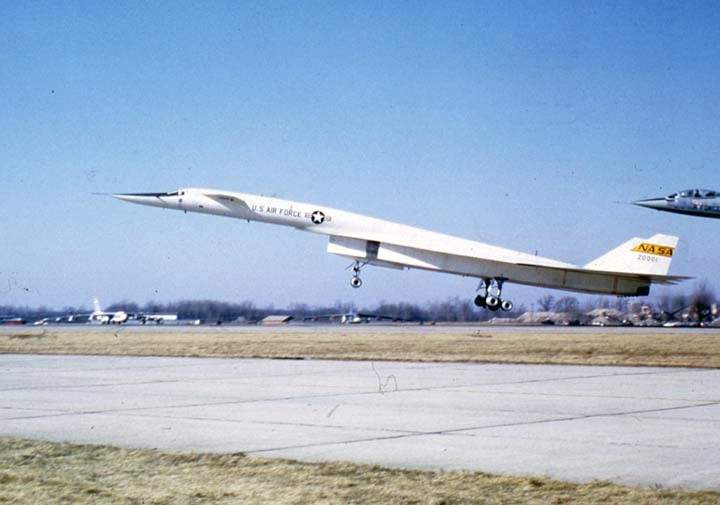 XB-70A AV-1 touching down on its last flight on February 4, 1969, when Fitzhugh “Fitz” Fulton and Emil “Ted” Sturmthal delivered it to the Air Force Museum (now the National Museum of the USAF).
XB-70A AV-1 touching down on its last flight on February 4, 1969, when Fitzhugh “Fitz” Fulton and Emil “Ted” Sturmthal delivered it to the Air Force Museum (now the National Museum of the USAF).
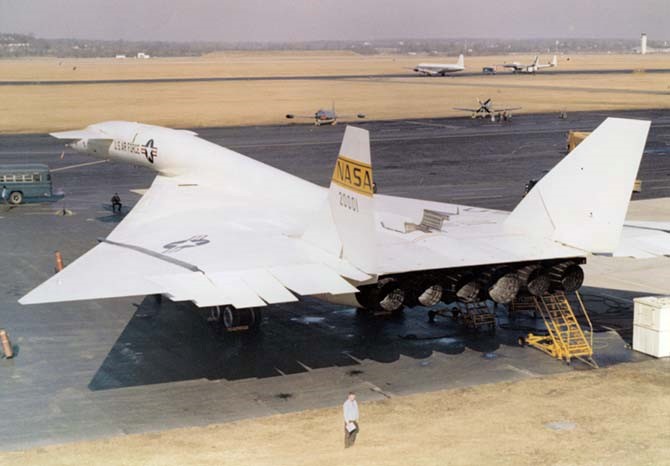 XB-70A AV-1 shortly after landing at Wright-Patterson AFB. The Museum’s Valkyrie was later repainted to its appearance in USAF service in the mid-1960s.
XB-70A AV-1 shortly after landing at Wright-Patterson AFB. The Museum’s Valkyrie was later repainted to its appearance in USAF service in the mid-1960s.
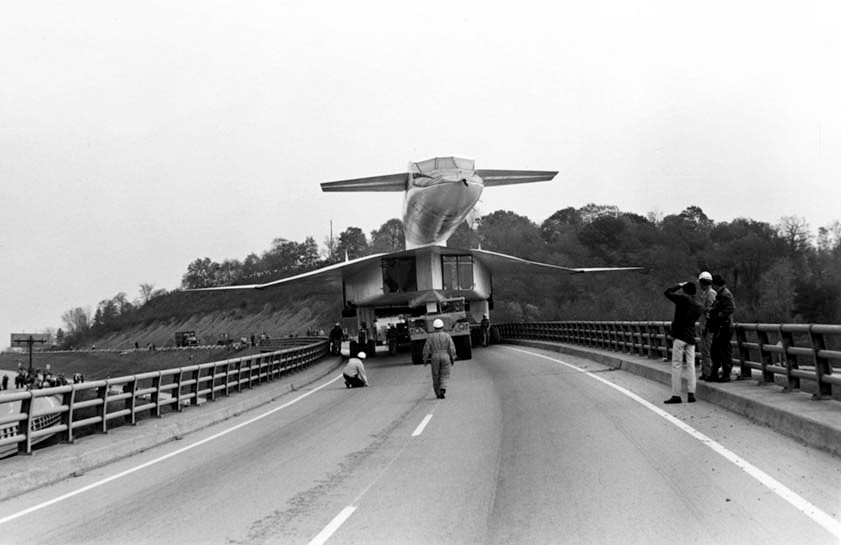 In 1971, XB-70A AV-1 was moved to the new Museum location several miles away. Museum staff carefully towed it over a narrow overpass on State Route 444.
In 1971, XB-70A AV-1 was moved to the new Museum location several miles away. Museum staff carefully towed it over a narrow overpass on State Route 444.
Click here to return to the Research & Development Gallery.